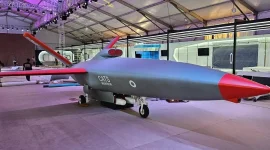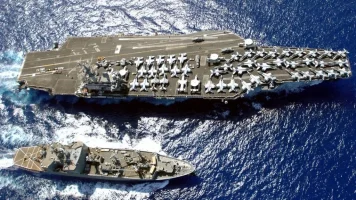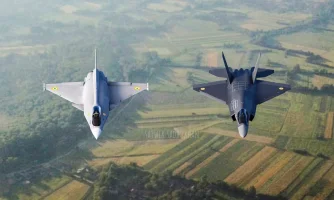- Views: 1K
- Replies: 3
In a significant advancement for its naval aviation capabilities, the Indian Navy is preparing for its pilots to begin training on the Dassault Rafale M (Marine) fighter jets in 2026.
This initiative is a key part of an inter-governmental agreement valued at ₹63,887 crore ($7.4 billion) signed with France on April 28, 2025. The agreement includes the acquisition of 26 Rafale M aircraft intended to operate from India's aircraft carriers, INS Vikrant and INS Vikramaditya.
According to informed sources, the training program will be conducted by Dassault Aviation in partnership with the French Navy. This collaboration will utilize the extensive experience of the French Navy and its nuclear-powered aircraft carrier, the Charles de Gaulle.
The first of the advanced fighter jets is expected to be delivered to India in the second quarter of 2028, with all 26 aircraft scheduled to be in service by the end of 2030. This development marks a crucial step in enhancing India's maritime air power, particularly in light of regional security considerations involving Pakistan and China.
The Rafale M is a versatile 4.5-generation fighter designed for carrier operations, specifically Short Take-Off But Arrested Recovery (STOBAR) systems used on Indian aircraft carriers. Mastering these operations requires specialised pilot training.
Dassault Aviation, supported by the French Navy's long-standing experience with the Rafale M since 2001, has committed to delivering a thorough training regimen. As part of this program, Indian pilots will gain practical experience on French Navy Rafale M aircraft and the Charles de Gaulle, practicing essential skills such as ski-jump takeoffs and arrested landings.
Training activities will take place in both France and India. The French segment will benefit from the advanced facilities of the Charles de Gaulle. Although this French carrier uses catapults for launching aircraft—a system different from the STOBAR configuration of INS Vikrant and INS Vikramaditya—the French Navy's deep understanding of Rafale M operations will be invaluable.
The rigorous training, typically lasting several months, will require pilots to accumulate a set number of flight hours, including time as pilot-in-command and in instrument flying, to ensure they can proficiently manage the Rafale M’s sophisticated technology, such as the RBE2-AA Active Electronically Scanned Array (AESA) radar, the SPECTRA electronic warfare suite, and Meteor long-range air-to-air missiles in maritime settings.
A central component of India's training strategy involves developing its own instructor pool by upskilling Indian Navy pilots already qualified as instructors on the MiG-29K, which is currently the primary fighter on India's carriers. These seasoned pilots, who possess considerable experience with STOBAR operations aboard INS Vikrant and INS Vikramaditya, will receive specialised training on the Rafale M in France.
Upon their return, they will be responsible for training other Indian pilots, thereby fostering self-sufficiency in naval aviation training and aligning with India's 'Aatmanirbhar Bharat' policy.
The MiG-29K has provided the Indian Navy with crucial carrier aviation experience since its induction in 2009, despite facing operational difficulties, including serviceability rates reported to be around 60% due to engine problems and shortages of spare parts, as highlighted in a 2020 audit.
By transitioning experienced MiG-29K instructors to the Rafale M, the Navy aims to leverage their existing expertise in naval operations while upgrading to an aircraft with superior capabilities, such as more advanced radar and a more versatile weapons package that includes Meteor and Exocet missiles.
A statement from the Ministry of Defence also noted that the similarity between the Rafale M and the 36 Rafale jets already in service with the Indian Air Force (IAF) will simplify training, logistics, and operational coordination.
The delivery schedule for the new fighters will commence with the arrival of the first Rafale M aircraft between April and June 2028, approximately 37 months after the contract was finalised. Nine jets are slated for delivery in 2028, followed by twelve in 2029, and the final five in 2030.
This order comprises 22 single-seat Rafale M fighters and four twin-seat trainer versions. The twin-seat trainers, while not designed for carrier operations and restricted to shore-based use, will play a vital role in simulator-based training programmes. This addresses concerns previously raised by naval officials regarding the need for comprehensive training methodologies beyond live carrier landings.



